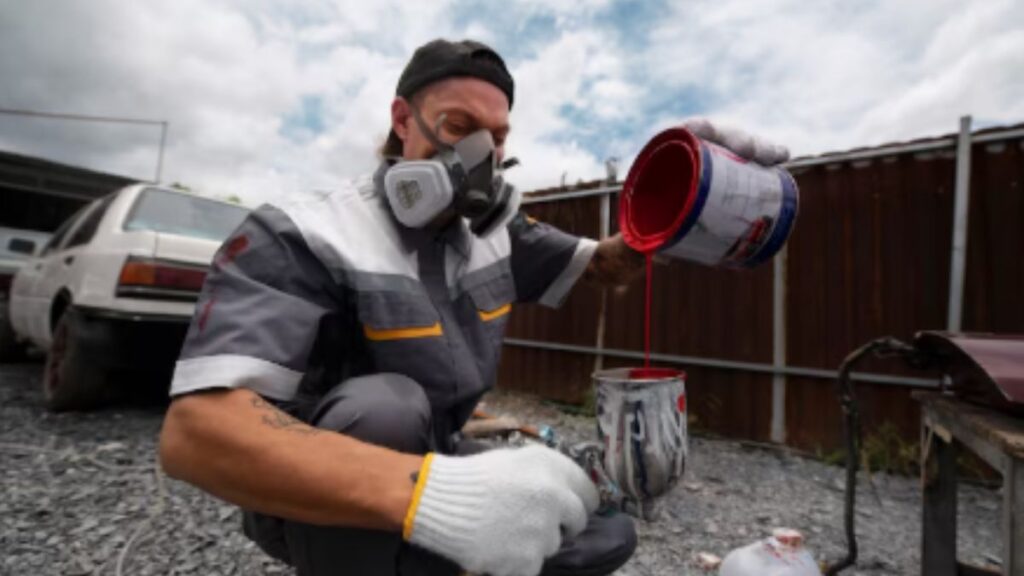Introduction to Asbestlint and its Dangers
Asbestlint, a term that might sound unfamiliar to many, refers to asbestos tape commonly used in construction and insulation applications. While it may seem harmless at first glance, the dangers associated with asbestlint can be significant. Exposure to asbestos fibers can lead to serious health issues, including lung cancer and mesothelioma. Given these risks, removing asbestlint from your home or workspace is crucial.
But should you tackle this task yourself or hire professionals? The choice between DIY removal and professional services can feel overwhelming. Each option has its own set of benefits and drawbacks that deserve careful consideration. In this post, we’ll explore both sides of the coin so you can make an informed decision on how best to handle asbestlint removal while keeping safety front and center.
DIY Removal: Pros and Cons
DIY removal of asbestlint can be appealing for many homeowners. It offers a sense of control and the potential to save money on labor costs.
One significant advantage is that you can work at your own pace. There’s no pressure from a contractor’s timeline, allowing for careful handling of materials.
However, tackling this project yourself comes with risks. Asbestos fibers are hazardous when disturbed, posing serious health threats. Without proper training and equipment, you may inadvertently increase exposure risk.
Another downside is the time investment required for research and execution. Understanding safe removal techniques takes effort and commitment, which might not suit everyone’s schedule.
Additionally, improper disposal could lead to legal repercussions or fines if local regulations aren’t followed closely. The allure of saving money might quickly fade in light of these potential challenges.
Professional Removal: Pros and Cons
Choosing professional removal of asbestlint comes with several advantages. Experts have the training and experience necessary to handle hazardous materials safely. They understand the specific regulations surrounding asbestos and follow strict guidelines, reducing the risk of exposure.
Professional services also use specialized equipment that ensures thorough removal. This means less chance of contamination in your home after the job is done. Additionally, many companies offer warranties on their work, providing peace of mind for homeowners.
On the downside, hiring a professional can be costly. Prices vary based on factors like location and severity of infestation. Some may find it challenging to budget for this expense.
There’s also a potential delay in scheduling an appointment, especially if demand is high in your area. Waiting for professionals might not suit everyone’s timeline or urgency regarding their living conditions.
Cost Comparison: DIY vs Professional
When considering the removal of asbestlint, cost is a significant factor. DIY removal often seems cheaper upfront. You might think purchasing protective gear and disposal bags will save you money.
However, hidden costs can accumulate quickly. If you’re not experienced, mistakes could lead to additional expenses like medical bills or even fines for improper disposal.
On the other hand, hiring professionals comes with a higher price tag initially. Yet, these experts bring years of experience and specialized equipment to the table. They ensure safe handling and compliant disposal practices.
You may find that professional services offer warranties or follow-up inspections too—something you won’t get with a DIY approach. Weighing these financial aspects carefully can help clarify your decision-making process when tackling asbestlint issues at home.
Safety Precautions for Both Methods
When tackling asbestlint removal, safety should always be the top priority. For DIY enthusiasts, wearing appropriate protective gear is essential. This includes a high-quality respirator mask, disposable coveralls, and gloves to minimize exposure.
Ventilation plays a critical role during the process. Ensure that the area is well-ventilated to prevent asbestos fibers from lingering in the air. Sealing off the workspace can also help contain any potential contamination.
For those opting for professional services, verify that your chosen contractor follows strict safety protocols. They should utilize specialized equipment designed to handle asbestos safely and have experience in containment procedures.
Even after professionals complete their work, it’s wise to conduct an air quality test before reoccupying the space. This extra step ensures that no harmful particles remain.
Both methods require diligence and respect for safety measures to protect yourself and others from exposure to this hazardous material.
Factors to Consider Before Making a Decision
When deciding between DIY and professional removal of asbestlint, several factors come into play. First, assess the extent of the contamination. Small areas may seem manageable for a DIY approach, but larger or more complicated situations often require expert intervention.
Next, consider your comfort level with handling hazardous materials. If you’re not experienced in safety protocols, it’s wise to opt for professionals who are trained to deal with asbestos safely.
Time is another crucial factor. DIY projects can take longer than anticipated due to necessary precautions and potential setbacks. Professionals usually have streamlined processes that ensure quicker results.
Evaluate local regulations regarding asbestos removal. Some areas mandate licensed professionals for any work involving asbestlint. Ignoring these laws can lead to significant fines and health risks down the line.
Conclusion
When it comes to tackling asbestlint, the decision between DIY removal and hiring professionals is significant. Each option has its merits and drawbacks, depending on your circumstances.
DIY removal might seem appealing due to cost savings and the satisfaction of completing a task yourself. However, it carries substantial risks, including health hazards from improper handling of asbestos materials. The learning curve can be steep, making it crucial to understand what you’re getting into before starting.
On the other hand, professional removal offers expertise and safety assurance but often comes at a higher price. Professionals are trained to manage hazardous materials effectively and follow regulations that protect both themselves and homeowners.
Cost should not be your only consideration; safety is paramount when dealing with asbestlint. Evaluate your own skills against the potential dangers associated with asbestos exposure.
Weigh all factors carefully—your budget, safety concerns, urgency of the project—and choose an approach that aligns best with your situation. Whether you decide on DIY or enlist help from experts will impact not just finances but also peace of mind in ensuring a safe living environment free from harmful substances like asbestlint.







